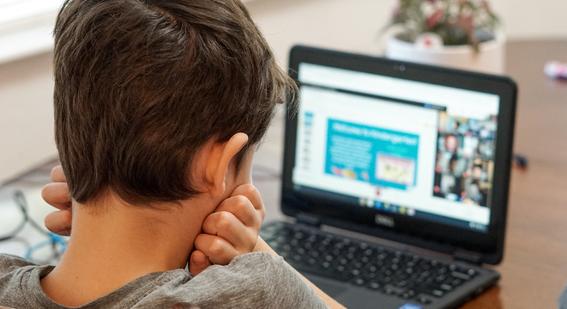The threat of COVID-19 on Ethiopia’s recent gains in pre-primary education
The potential effects of COVID-19 on education systems are now being widely considered. With learning disrupted for more than 1.6 billion children and youth worldwide, the implications are likely to be huge. Yet pre-primary education is one area that is receiving less attention.

By Janice Kim and Pauline Rose on May 4, 2020 in Coronavirus, Early Childhood 4
This blog was written by Janice Kim, Postdoctoral Research Associate and Pauline Rose, Director, REAL Centre, University of Cambridge. Pauline is also International Research Team Lead for the Ethiopia RISE programme. This blog is part of a series from the REAL Centre reflecting on the impacts of the current COVID-19 pandemic on research work on international education and development. It has also been published on the RISE programme website.
The threat of COVID-19 on Ethiopia’s recent gains in pre-primary education
The potential effects of COVID-19 on education systems are now being widely considered. With learning disrupted for more than 1.6 billion children and youth worldwide, the implications are likely to be huge. Yet pre-primary education is one area that is receiving less attention. This is a potentially serious neglect, recognising the importance of tackling disadvantage from the early years. Given that early childhood is a critical period in which a child’s foundations for lifelong success is laid, the threats to financial, physical, mental and social health of families caused by COVID-19 could possibly affect their children for the rest of their lives.
In Ethiopia, schools have been closed from 16 March 2020, and more than 26 million learners from over 47,000 schools are currently staying at home. This places at risk the improvements to date in Ethiopia’s education provision, which has experienced a rapid shift from an elite to the mass system in primary education over the past two decades, opening up opportunities to many who were previously excluded from access to education. Despite these improvements, around 1 in 4 children are at risk of dropping out in the first year of primary schooling, and nearly half of students are likely to fail to complete primary education. Student learning outcomes also remain very low: 90% of Grade 4 students in Ethiopia have not reached the basic reading proficiency level.
A sudden influx of young children into pre-primary education in Ethiopia
Recognising these challenges, in 2010, Ethiopia adopted a new policy framework for early childhood education, with the aim of ensuring that children from disadvantaged backgrounds in particular would be ready for primary school. With increased government involvement, the gross enrolment rate in pre-primary education surged from 4 to 46% over a six-year period. This focus is aligned with the increased attention to pre-primary education as a means to promote school readiness in the education Sustainable Development Goal (SDG4). In an emergency such as the current pandemic, young children from disadvantaged backgrounds are at particular risk: of being left unattended, exposed to the economic hardship of families, with lack of access to clean water and sanitation, adequate nutrition and health care, and stimulating nurturing environments. Extremely limited government resources had been allocated to pre-primary education prior to the crisis, reaching only around 3% of the total education budget, making an appropriate response in the current situation even more challenging.
How to reach young children with no distance learning for pre-primary?
The Ministry of Education in Ethiopia has been encouraging students to continue education from home. Primary school students are advised to follow radio lessons and read their textbooks at home, while secondary school students are advised to follow lessons that can be accessed through satellite TV. However, there is no such strategy for pre-primary school students, including those who are enrolled in O-Class, a one-year reception class for 6-year-olds attached to public primary school. This is not aligned with the Government’s ambition of ensuring pre-primary to be free, compulsory and part of the general education in the Education Sector Roadmap 2018-2030. As a priority, consideration needs to be given to how best to reach these children, for example whether the development of media lessons for pre-school-aged children and their families is feasible and appropriate.
To design an appropriate response and identify the best ways of reaching young children, evidence is needed on the extent to which families have access to audio or other media technologies at home. In this blog, we use household survey data from our World Bank-funded Early Learning Partnership (ELP) research in Ethiopia to explore which children have access to audio and mobile phones that might enable them to join distance learning during the uncertain period of school closures. These data were collected in November 2019 from 3,200 households with pre-school-aged children across seven regions of Ethiopia. We highlight wide inequalities by household wealth and urban-rural locations.
Access to radio is generally low and unequal between rich and poor households
According to 2016 Demographic and Health Survey data, the national average of radio ownership in Ethiopia is surprisingly low at 28%, far below the African average (54%). Our ELP data show a similar pattern, with only one quarter of the households having a radio at home. It is striking that there is low radio coverage in both rural and urban areas. The poorest are least likely to have access to a radio (18%). Even amongst the richest in the sample, fewer than one third have access (Figure 1). The overall picture raises a question about whether radio lessons can be the best way to reach young children during the time of school closures. Only 10% of households in Ethiopia, primarily in urban areas, have a TV at home, therefore it is highly unlikely that this can be an effective means of delivering education content to the vast majority of the population.




